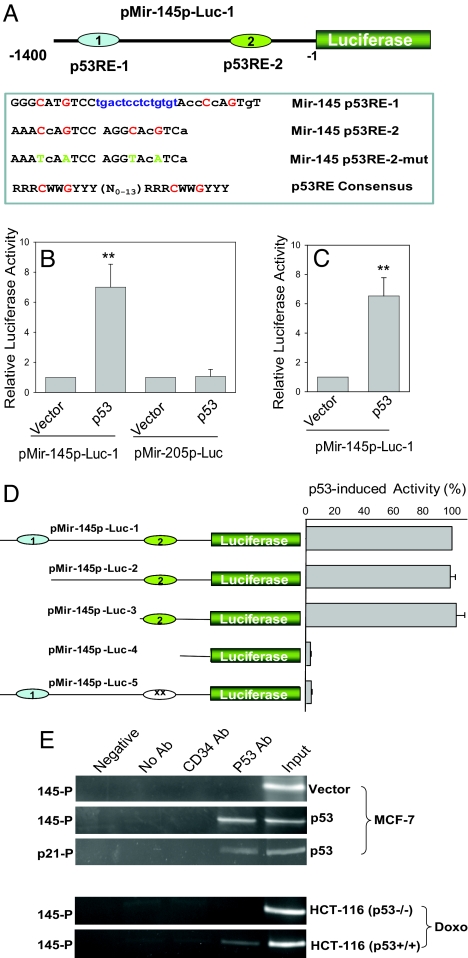Fig. 3.
p53 induces the miR-145 promoter activity through binding to p53RE-2. (A) A schematic description of the putative miR-145 promoter with 2 potential p53 response elements, p53RE-1, and p53RE-2 and the mutated p53RE-2 (p53RE-2-mut), as compared with the p53RE consensus, where R = A+G; W = A+T and Y = C+T. Small letters denote deviations from the consensus. The conserved nucleotides C and G are highlighted in red. The sequences between the 2 half sites are indicated with blue color. In p53RE-2-mut, the conserved C and G were replaced by T and A, respectively. (B) and C, Luciferase assays with pMIR-145p-Luc-1 in NIH/3T3 and MCF-7 cells, respectively. pMIR-205p-Luc was used as a negative control. (v) vector. (D) Deletion and site-directed mutagenesis analysis identifies the importance of miR-145 p53RE-2 in p53-mediated induction of the luciferase activity. (E) ChIP assay reveals that p53 specifically interacts with p53RE-2. p21 serves as a positive control. Sequences from the upstream region of the human calcium-activated chloride channel protein 2 gene without p53 binding sites serves as a negative control. 145-p, mir-145 promoter; p21-p, p21 promoter. Values in B–D are means ± SE of 3 separate experiments and normalized to respective controls as 1 (B and C) or 100% (D). **, P < 0.01.

